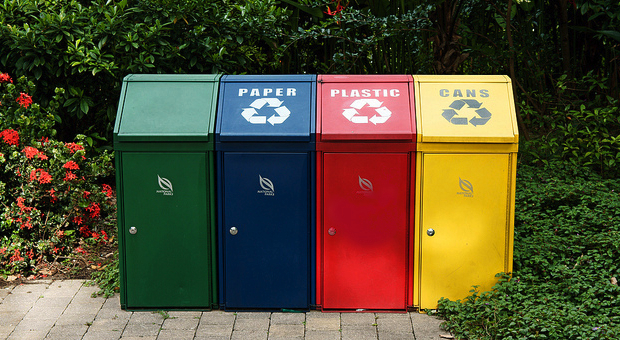How do you know if a package you buy will be recycled? That hasn't been easy--until now.

How do you know if a package you buy will be recycled? More often than not, there's no easy way to tell. The inscrutable number codes on the bottom of plastic packages only describe the type of plastic it contains, not whether that plastic is recyclable. And just because a package trumpets a label saying "100% recyclable" or comes emblazoned with the chasing arrows logo, it's no guarantee that it actually can or will be recycled. Grocery store shelves are littered with misleadingly labeled products, much to the frustration of both shoppers and companies that are committed to recycling.
With that in mind, a business group devoted to recycable packaging is launching a label system it hopes will clear up the confusion. The new system is the brainchild of the Sustainable Packaging Coalition (SPC), a working group of more than 200 companies that includes some of the country’s biggest manufacturers and retailers--including Microsoft, FedEx, and McDonald's. The SPC system classifies four types of packaging:
• Widely recycled: packaging materials such as glass, cardboard, PET plastic bottles which are recycled in most communities.• Limited recycling: materials that are only recycled in 20 to 60% of the U.S., such as polypropylene yogurt containers.• Not recycled: materials that are rarely recycled, such as Styrofoam.• Store drop-off: category for the bags and plastic film that are often collected by grocery stores for recycling.
 The labels are not mutually exclusive; a single product might sport several, depending on its packaging. For instance, a box of cereal may carry both a "widely recycled" label, for the cardboard box, and a "limited recycling" label, referring to the plastic bag inside.
The labels are not mutually exclusive; a single product might sport several, depending on its packaging. For instance, a box of cereal may carry both a "widely recycled" label, for the cardboard box, and a "limited recycling" label, referring to the plastic bag inside.
"The idea is that each component that is easily separable by the consumer is labeled separately," said Anne Bedarf, the SPC project manager who helped develop the system. The labels, which were in development for more than three years, are based on ones that are widely used in Britain. Bedarf said it was difficult to determine if the labeling system had boosted recycling rates there. "But I can say it has increased consumer awareness of recycling."
Meanwhile, a parallel effort is underway to revamp the resin code used for plastic recycling: those squint-to-read numbers stamped onto plastic containers. Critics say the code is outdated because it doesn’t take account of bio-plastics or the great variety of polymers now pigeonholed simply as #7’s (AKA "other plastics"). The standards-setting group, the American Society for Testing and Materials, is wrestling with that issue and isn’t expected to come out with a new code for a few years.
Some member companies of the SPC will start testing the new labels this fall, as part of a pilot project extending through 2012. After that, the group plans to make them more widely available. "Our hope is for it to become a universal label," Bedarf said.
[Top image: modified from Flickr user epSos.de]
Susan Freinkel is the author of Plastic: A Toxic Love Story and American Chestnut: The Life, Death and Rebirth of a Perfect Tree. A San Francisco writer, her work has appeared in Discover, Smithsonian, the New York Times, Reader's Digest and other national publications.